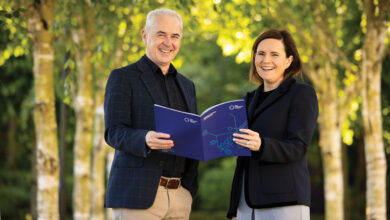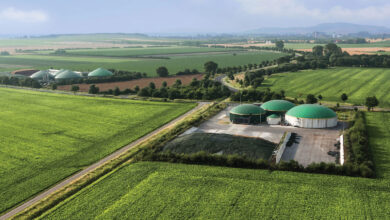Biomethane critical to high-heat decarbonisation

Following the publication of the National Biomethane Strategy, Barry Quinlan – whose remit as Assistant Secretary at the Department of the Environment, Climate and Communications (DECC) includes heat policy – outlines the ambition to develop a sustainable biomethane industry of scale by 2030.
In the National Biomethane Strategy, the Government has committed to supporting the delivery of up to 5.7TWh of indigenously produced biomethane by 2030, a significant increase on the 75 GWh per annum currently produced.
The scale of the transformation required is better illustrated by the need to move from an equivalent of 0.001 per cent of the current gas demand, to at least 10 per cent of national gas demand by 2030.
Quinlan was speaking in the context that increased biomethane production and use makes up one of three priority areas for DECC in efforts to decarbonise Ireland’s buildings and heat demand, alongside an extensive retrofitting programme, and a desire to grow district heating.
Highlighting that the State currently has only a handful of operational biomethane facilities, with only two injecting into the gas grid, Quinlan says that a more than trebling of the previous biomethane target outlined in Climate Action Plan 2019 will require the construction of between 140 to 200 new anaerobic digestion facilities.
Prior to the National Biomethane Strategy, the National Heat Study examined bioenergy resources in Ireland, and identified biomethane as “a competitive, cost-efficient, path to decarbonising sectors with a high thermal heat demand”.
Quinlan explains that the State’s promotion of a biomethane production increase is multifaceted. While increased production will facilitate the displacement of fossil fuels, and reduce emissions in the heat sector, it will also strengthen energy security and, importantly, reduce emissions in the agriculture sector.
Historically, across Europe, AD was developed to produce biogas which in turn was used to generate electricity. However, this is now seen as an expensive way to generate renewable electricity, and the Assistant Secretary emphasises the consensus that biomethane resources be principally used in sectors where no alternative decarbonisation options exist; such as high temperature heat processes.
To this end, Quinlan highlights that the strategy has been co-delivered by the Department of Agriculture, Food and the Marine and DECC, to ensure it fully supports an “agri-centric, environmentally sustainable biomethane industry”, with lessons taken from a trend across Europe to utilise limited bio-resources to generate biomethane and decarbonise high temperature heat, gas grids in general, and the transport sector.
Focusing specifically on the UK and the Netherlands, where massive expansions in biomethane production were achieved in a relatively short 10-year time frame, he believes that all the evidence points to Ireland’s ability to achieve the 5.7 TWh by 2030 target.
“Given the need to swiftly stimulate the industry, the provision of capital grants and the Renewable Heat Obligation, alongside industry investment will put Ireland on a trajectory to meet its 5.7 TWh target by 2030,” he says.
Concluding, Quinlan explains that a Biomethane Sustainability Charter, scheduled to be published in Q3 2024, will help ensure the successful roll-out of an “agri-led biomethane industry”, and protect against unintended negative consequences.





